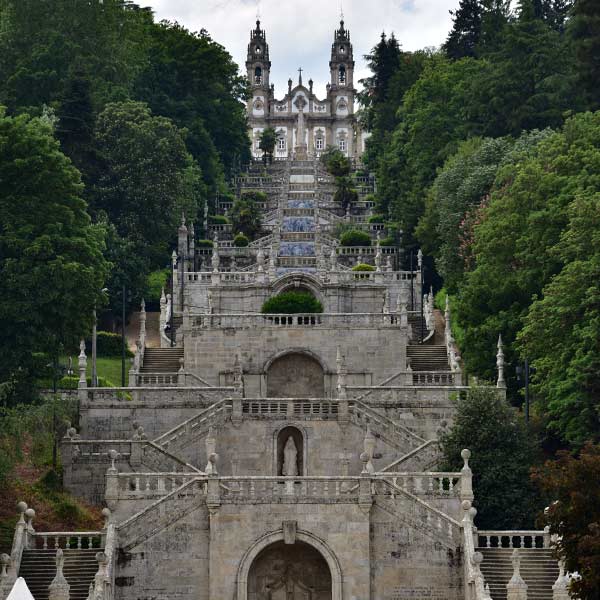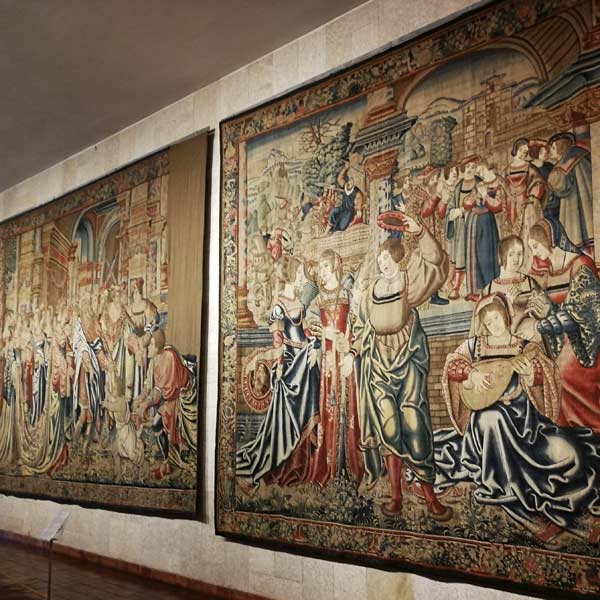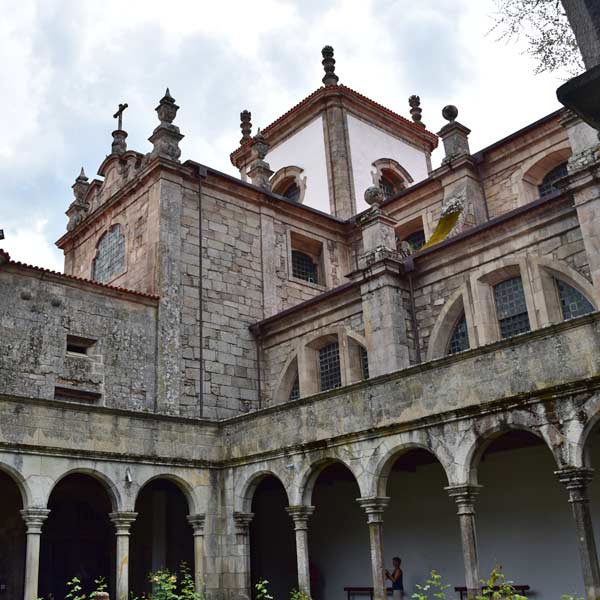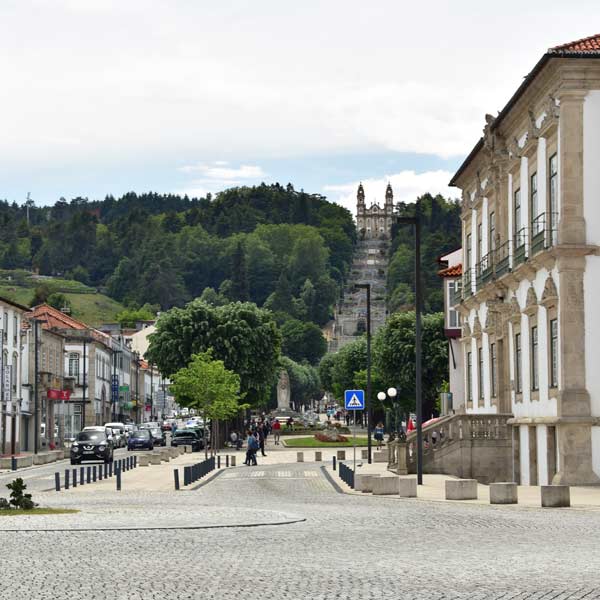Porto-North-Portugal.com
The best independent guide to north Portugal
Porto-North-Portugal.com
The best independent guide to north Portugal
Lamego, Portugal; a tourism, day trip and holiday guide for 2025
Deep in the heart of the Douro Valley, Lamego is a historic town where Portugal’s devout faith and the traditions of wine-making converge. It is a place of stately grandeur, whose immense importance in the nation's founding story adds a profound depth to its character.
The town is dominated by the monumental Santuário de Nossa Senhora dos Remédios, fronted by a magnificent Baroque staircase of 686 steps that zigzags dramatically up the hillside.
Below the sanctuary, the historic centre holds a formidable Moorish castle, the ancient Sé Cathedral and elegant 18th-century villas that speak of the immense wealth generated during the golden age of wine production.
The heart of Lamego is found along its grand central boulevard. This beautiful tree-lined avenue is where local life unfolds in open-air cafés and at market stalls selling regional delicacies, including the famed local presunto (cured ham). The avenue captures the essence of Lamego: relaxed, authentic, and deeply Portuguese. It is this unassuming charm that entices visitors, often persuading them to stay far longer than they ever planned.
Beyond its historic core, Lamego serves as the perfect gateway to the spectacular landscapes of the Alto Douro. From here, you can embark on scenic drives through vine-covered terraces, visit prestigious port wine quintas, and explore the tranquil riverside towns.
This guide will provide everything you need to discover Lamego, helping you to explore one of the finest towns of the Douro region.
Highlights of Lamego
A day trip to Lamego
Lamego makes for an enjoyable day trip from Porto or as a detour while visiting the Douro Valley.
The town can be fully seen within three hours of sightseeing but will include a lot of uphill walking. It is 686 steps up to the Santuário de Nossa Senhora dos Remédios church, and is an equally a steep climb up to the castle. During the heat of summer, the visit will be much longer and probably include a long lunch.
Often a day trip to Lamego is combined with a visit to Peso da Régua, the main town of the Alto Douro region. In our opinion, the town of Pinhão further up the Douro is much more scenic than Peso da Régua, and a better place to visit.
If you are planning a day trip just to Lamego, the day could be extended to include the ruins of Portugal's most important monastery, the Mosteiro de São João de Tarouca, and the delightful medieval tower and bridge at Ucanha. Also, there is the grand monastery of Salzedas and the Visigothic church of São Pedro de Balsemão.
If you wish to taste the Raposeira sparkling wines for which the region is famed, visit the Caves da Raposeira (number 12 on the map below).
Below is an interactive map for a suggested tour of Lamego, also included in the map are the highlights of the surrounding region (to see these zoom out on the map):
Sights of Lamego 1) Museu de Lamego 2) Catedral de Lamego 3) Ribeiro Conceição Theatre 4) Cisterna de Lamego 5) Castelo de Lamego 6) Igreja de Santa María de Almacave 7) Praça da Avenida Doutor Alfredo de Sousa 8) Capela Espirito Santo 9) Escadas da Nossa 10) Pátio dos Reis 11) Santuário de Nossa Senhora dos Remédios 12) Caves da Raposeira
Sights surrounding Lamego (zoom out to view) 1) Mosteiro de São João de Tarouca 2) Torre de Ucanha 3) Monastery de Salzedas 4) Capela de São Pedro de Balsemão 5) Peso da Régua 6) Pinhão
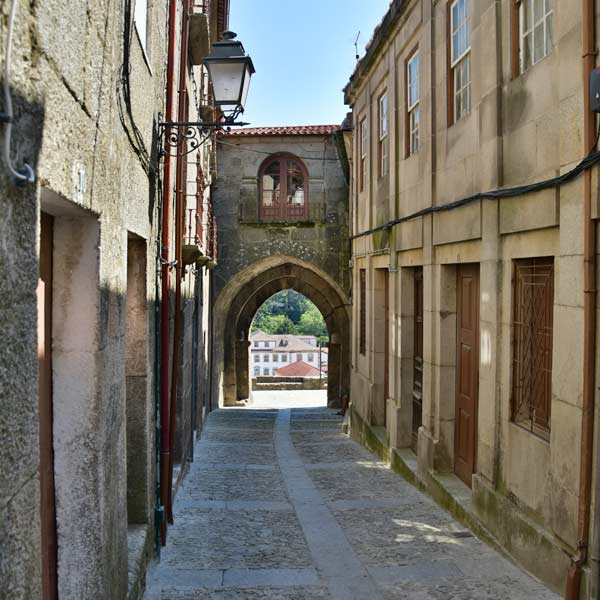
The historic streets around the castle
A longer stay in Lamego
Lamego is a very pleasant destination for a stay of a few nights. Lamego has a decent selection of restaurants and bars for a town of its size, and is always bustling with tourist and locals alike.
The town makes for a very good base from which to explore the Douro Valley as it is easy to travel to Peso da Régua (via A24), and there is the scenic N222road to Pinhão and Tua. A second-day trip could be to the monasteries of São João de Tarouca, Salzedas and the tower at Ucanh, and the third day could visit the Fundação da Casa De Mateus near Vila Real.
The map below shows the location of the best hotels and accommodation in Lamego. If you adjust the dates to your stay, it will display current prices and availability.
Sights of Lamego
Santuário de Nossa Senhora dos Remédios
The Nossa Senhora dos Remédios is a beautiful Rococo styled church that stands at the top of Saint Stephen's hill. The site is an important pilgrimage location, and this tradition originates from before the construction of the church (in 1750), when there was a small chapel dedicated to Saint Stephen.
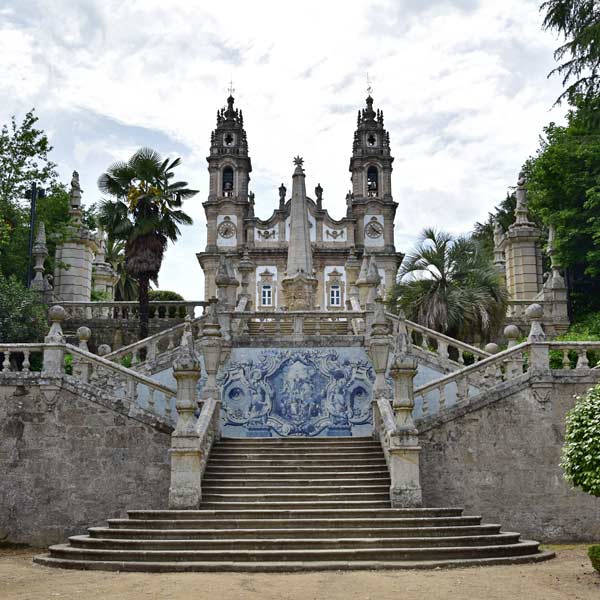
During the 16th century the wealthy Lamego church converted the devotion to the Virgin Mary, and it became a pilgrimage site for the cure of disease - Hence the church is known as the Mary of Medicines/Remedies.
The church was designed by northern Portugal's masterful architect, the Italian Nicolau Nasoni, but was only finally completed in 1905.
The baroque stairway to the church has nine levels and passes through the dense forests of the Santo Estêvão Park. Just below the church is the Courtyard of the Kings in which a 14m high obelisk stands.
Catedral de Lamego
The sombre gothic cathedral dates from 1129, but only the base of the bell tower remains from this period. The decorative gothic exterior was added to the church during the rule of King Manuel I, between 1508 and 1515.
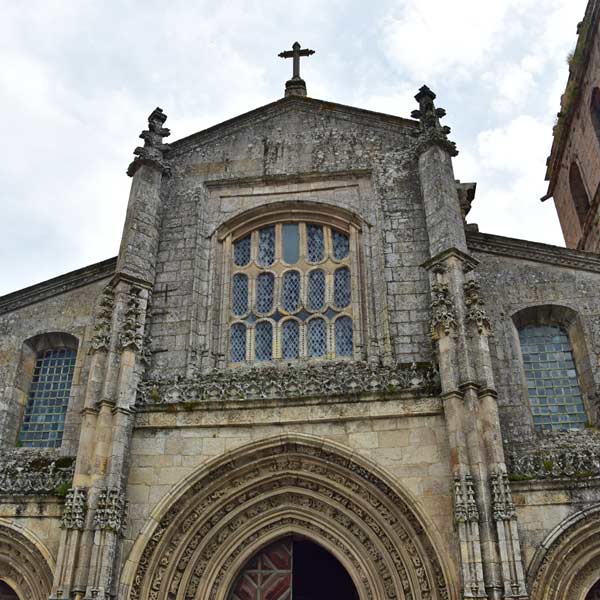
Inside are three naves and impressive altars, but the real attraction is the beautifully painted ceilings (by Nicolau Nasoni). Attached to the cathedral is a Renaissance cloister.
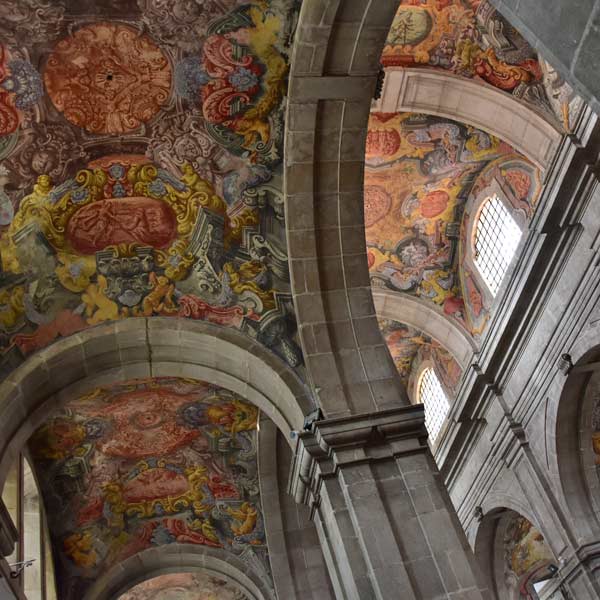
Museu de Lamego
The Museu de Lamego (€3.00) is housed in the former Bishops' Palace and exhibits the religious art collection amassed by the bishops of Lamego.
This museum is regarded as one of the finest regional museums of Portugal and is definitely worthy of a visit. Highlights include 16th-century Flemish tapestries depicting the Oedipus story and five religious artworks by Grão Vasco.
Further details on the collection can be seen on the website: museudelamego.gov.pt
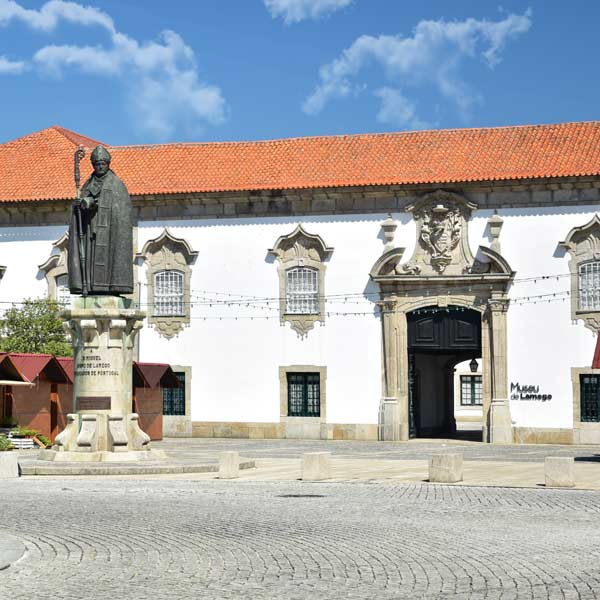
Castelo de Lamego
All that remains of this one important Moorish castle is the inner walled keep and a single watchtower.
There are bigger and better castles in Portugal, but it is free to enter, and from the castle's battlements are wonderful views over the town.
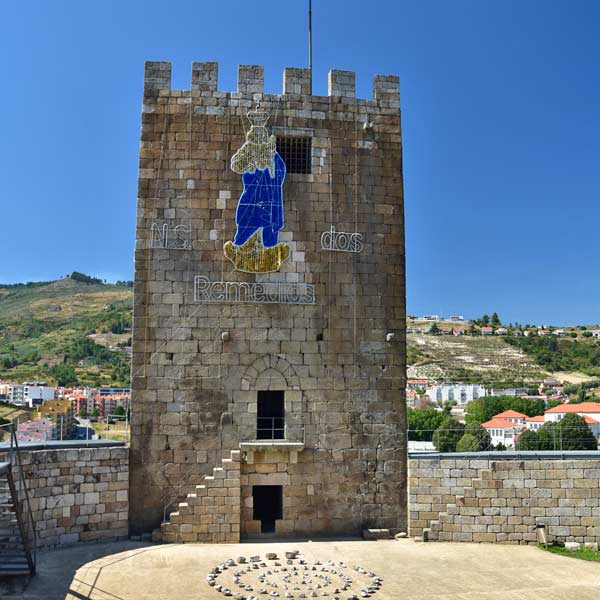
The watch tower in the Castelo de Lamego
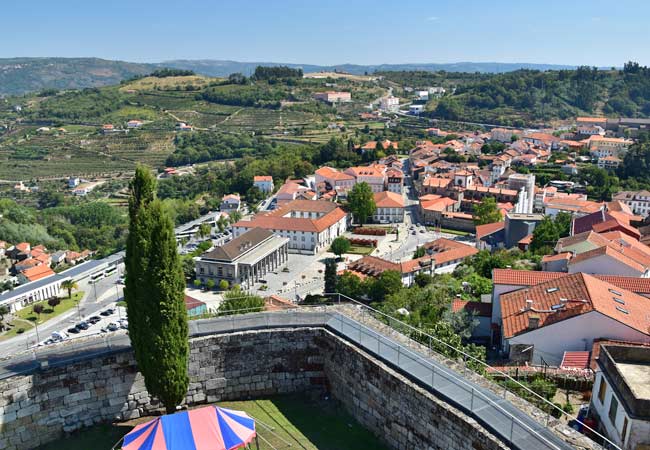
The view over the Museu de Lamego and cathedral from the castle
If you've found our content valuable, we'd welcome your support.
The digital publishing landscape has evolved significantly. As a small independent publisher, we face growing challenges. Search engines increasingly favour paid content over organic results, while AI-generated content often reproduces original work without attribution.
To support our work, please consider bookmarking this page (press Ctrl + D) for quick access. If you find an article helpful, we'd be grateful if you'd share it with friends on social media.
For specific questions, please see our Reddit community at r/LisbonPortugalTravel.
Should you notice any outdated or incorrect information, please contact us at [email protected]
Thank you for helping us continue to provide valuable content in an increasingly challenging digital environment.
